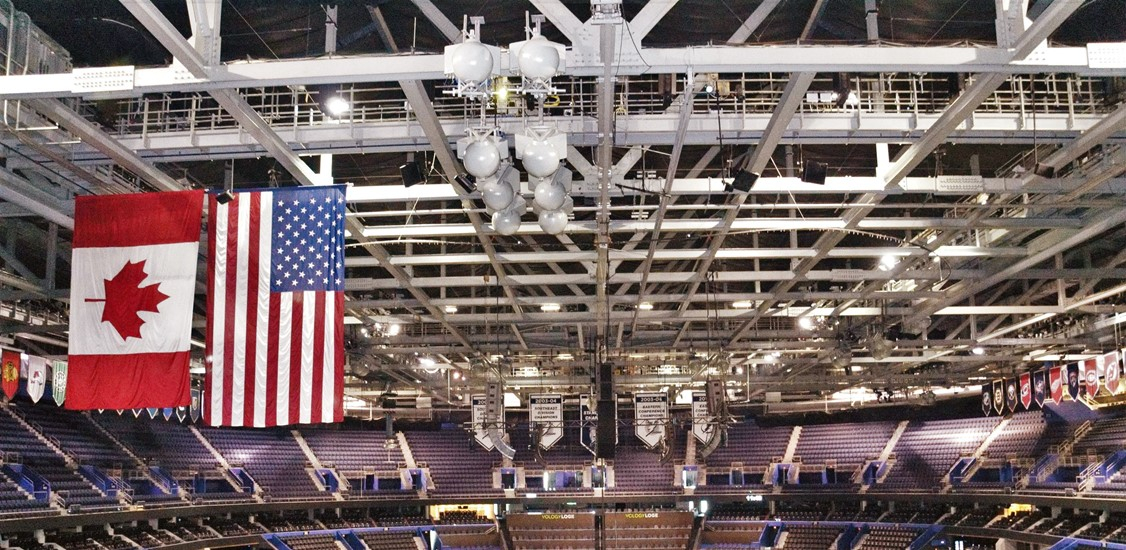If there is one certainty in the cellular world, it is the bet that demand for bandwidth will always keep increasing. This observation is especially true in large public venues such as arenas and stadiums, where sports and concert fans at big events are always the heaviest users of wireless services.
The dilemma for venue owners and operators, and their connectivity services partners, is how to provide continued support for the ever-increasing demand for connectivity, especially as mobile phones and consumer apps and services keep increasing in power and data needs. As if it wasn't hard enough to provide enough bandwidth for instant messaging and live video communications, on the near horizon is the advent of live mobile gaming inside venues, which will only increase the need for lower latency and greater throughput.
Already, venues of all shapes and sizes are trying different methods to address the problem, but using existing technologies, the options are limited. A simple first-effort fix is usually to just add more antennas to the cellular network, but even that strategy runs out of room eventually due to interference and venue real estate issues. Some other venues have experimented with deploying cellular antennas in under-seat or handrail enclosures, which can improve the density of the network coverage, but that strategy can also introduce new RF challenges with seat construction materials (including metal mounting rails) while also significantly adding to the cost of deployment, since under-seat often requires concrete core drills and additional behind-the-scenes conduit runs.
Fortunately for venue owners and operators, a new technology and deployment method is now available that can not only significantly increase cellular coverage and capacity in venues, but it can do so at a lower cost than traditional methods with the added advantage of improved aesthetics. By using lens antennas mounted in ceiling or roof structures, venues can take advantage of the multi-radio infrastructure inside each device to provide multiple direct line-of-sight beams that can be precisely targeted at specific seating sections. Since each lens antenna can effectively replace numerous other single-beam antennas, there can be great cost and operational savings realized by having fewer active components, while also basically eliminating the interference issues caused when client devices can "see" multiple radios inside a venue.
Distinct shape, exceptional performance
You may have seen or noticed lens antennas in the US before, as they are mainly in the shape of large balls, with diameters ranging from 1 foot to 6 feet across. Over the past few years, lens antennas have been used in a number of deployments, including some temporary installations at events like the Coachella Valley Music and Arts Festival and at the presidential inauguration. Professional sports venues, including Amalie Arena, home of the NHL's Tampa Bay Lightning, and Allegiant Stadium, home of the NFL's Las Vegas Raiders, have also made lens antennas a significant part of their in-venue cellular solution, with more deployments already in progress.
Based on a theory from the 1940s originally known as the Luneberg Lens, the lens antennas' multiple beam advantages come from the distinct shape of the lens, which has the capability of focusing radio frequency from any direction. Because the lens is symmetrical, you can have multiple beams coming from a single lens. In fact, with current materials and technology, certain lens antenna can create up to 48 distinct, precise beams each, that provide better broadband capacity than an array antenna or traditional antenna.
Lens antennas can also connect to consumer devices at a much farther distance than regular in-building antennas, allowing the lens antennas to be deployed in the ceiling, catwalk or roof structures instead of in public areas or in seating bowls. Unlike traditional cellular deployments, where the multiple antennas require advanced testing and tuning to limit interference between radios, lens antennas can be tuned simply by using laser pointers as their line-of-sight broadcast directions cannot be "heard" by devices that are not inside the narrow beams of coverage.
With up to 48 radios possible inside each lens antenna, venues can significantly increase capacity and coverage with far fewer cable and power runs to each active location. Additional capacity can easily be added by adding more lens antennas, which can be placed quite closely together since the directional focus of the beams does not cause any interference between devices. Lens antenna deployments can also work well in hybrid situations, as an adjunct to an existing distributed antenna system (DAS) infrastructure.
From an aesthetics standpoint, lens antennas deliver another desirable effect, in keeping the equipment out of the view of the venue guests. Since the antennas themselves can be painted in any color necessary, they are also easily concealed to blend in with the background of the roof or ceiling areas.
Easier deployment, better performance, lower price
While there is no crystal ball that can predict accurately exactly what venues will need when it comes to cellular and wireless connectivity needs, the simple idea that demand will continue to grow should inform future planning for all stadium and arena IT teams. While there will always be a need to balance costs with desired performance and acceptable levels of coverage, any venue that is in the process of evaluating changes or improvements to its wireless ecosystem should consider the lens antenna advantage, of delivering better performance in an easier deployment method at a lower overall price.






















